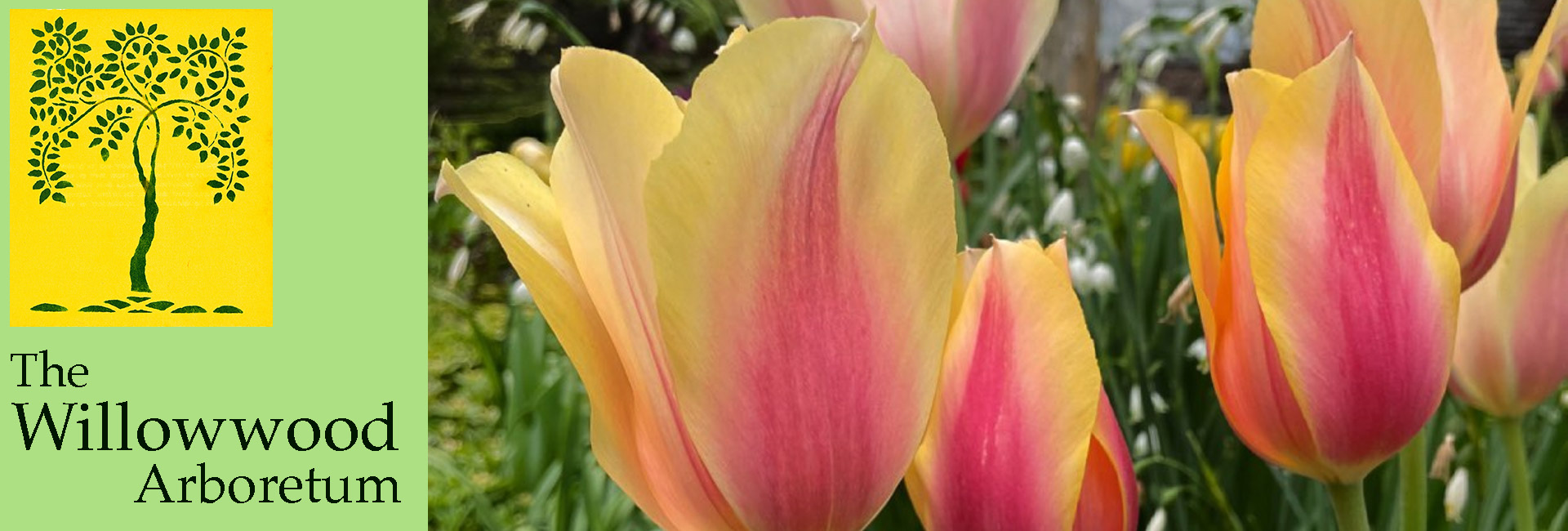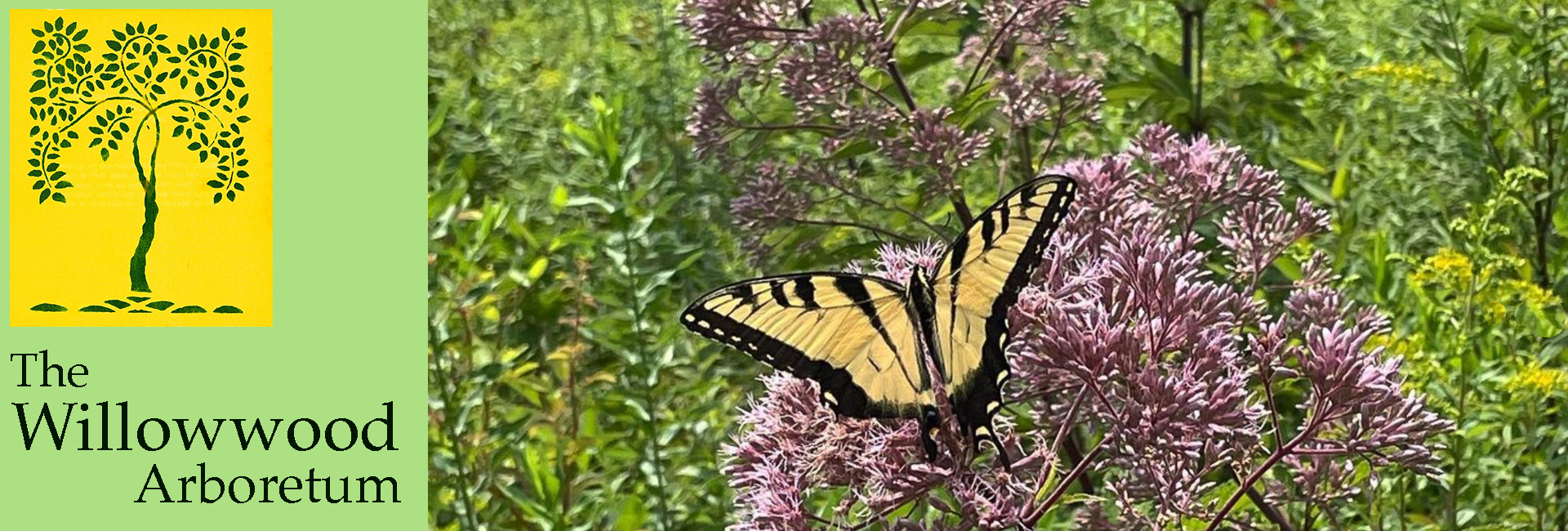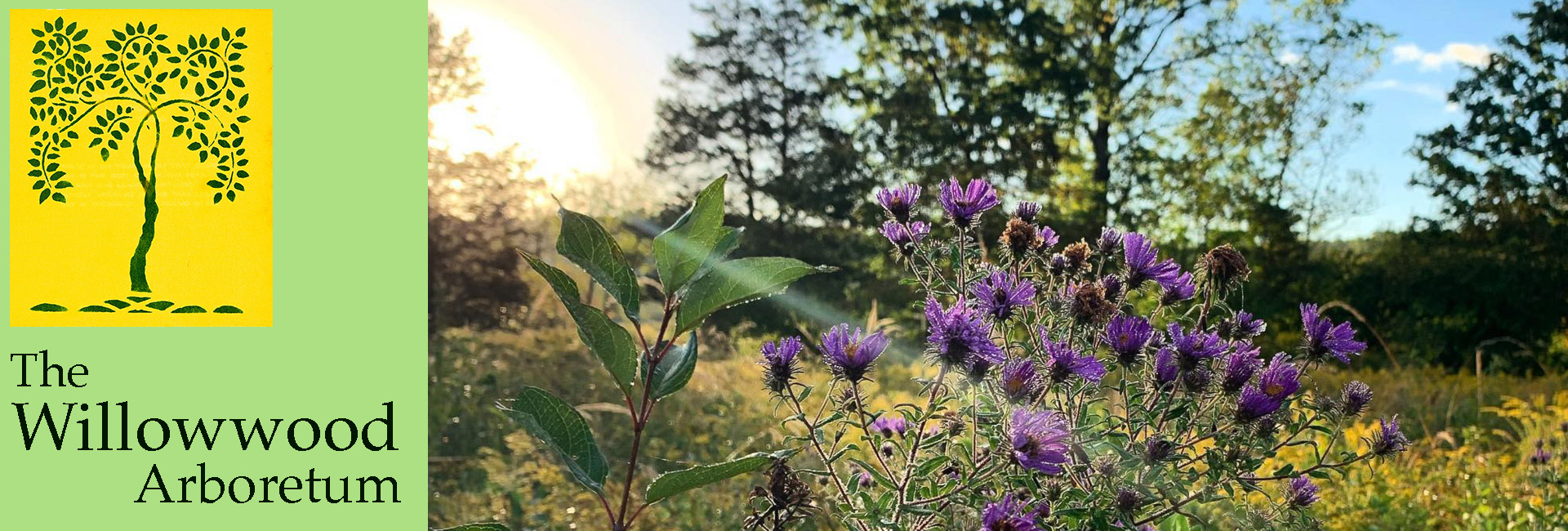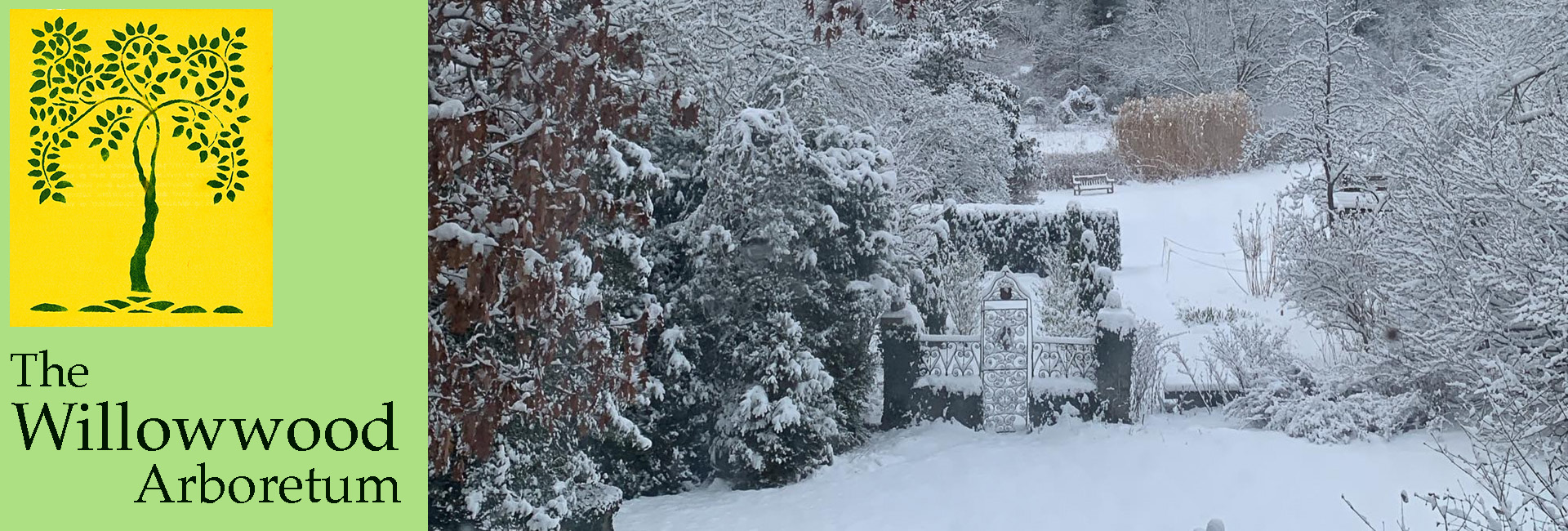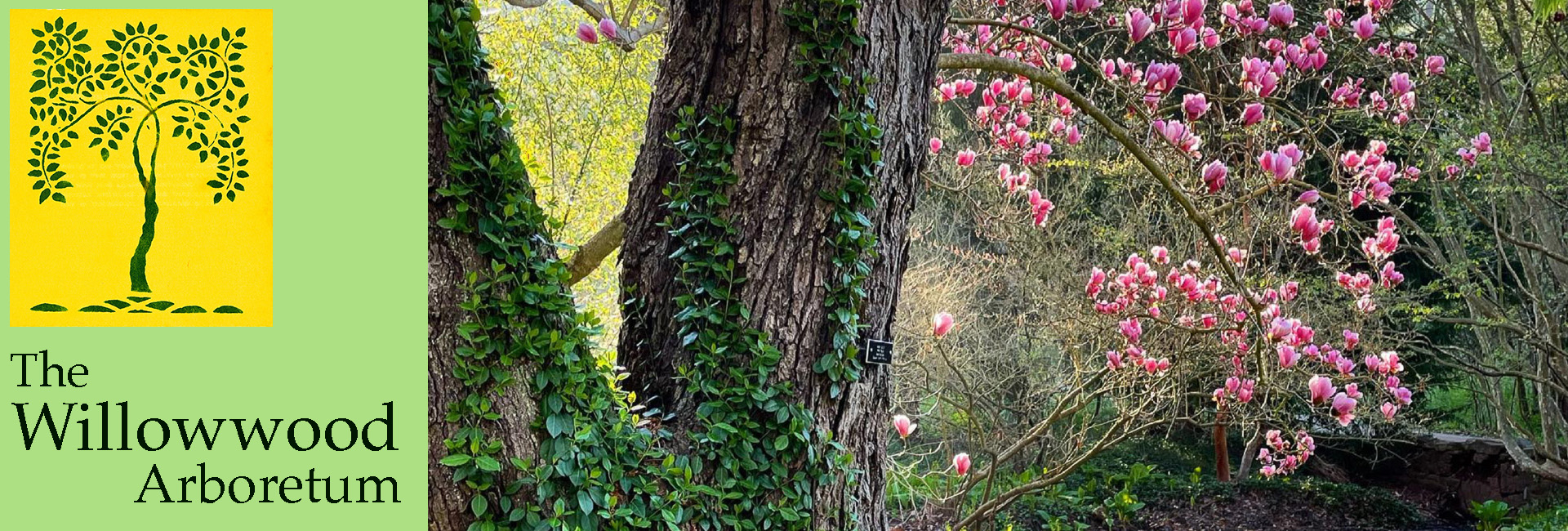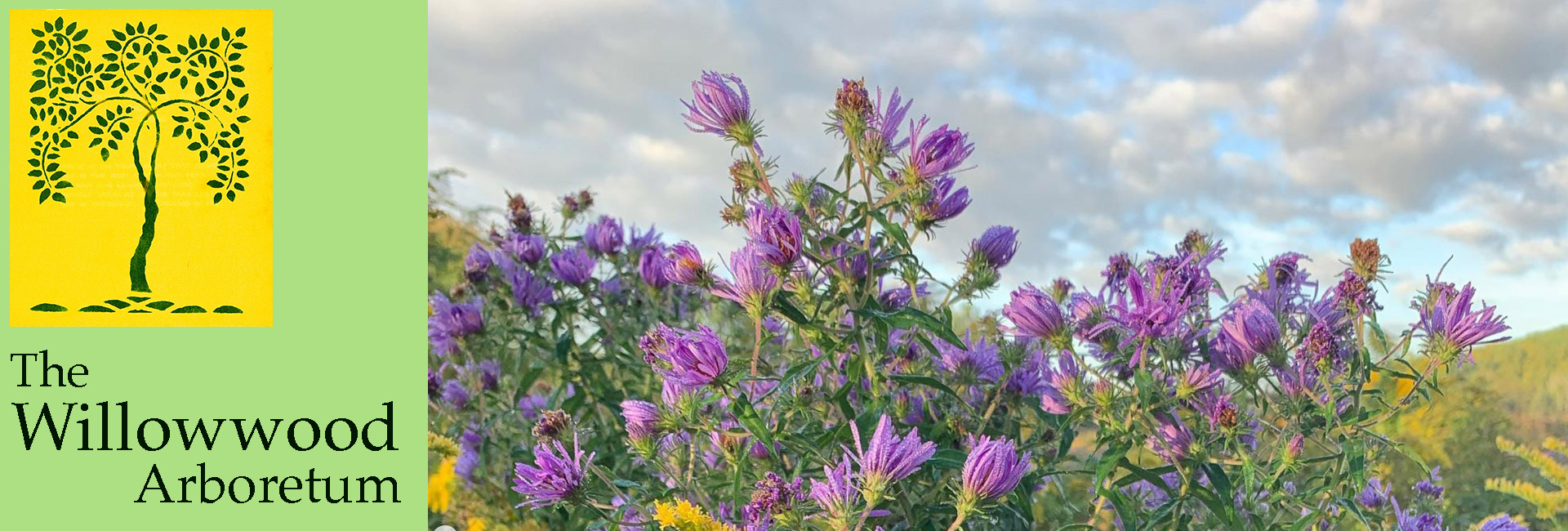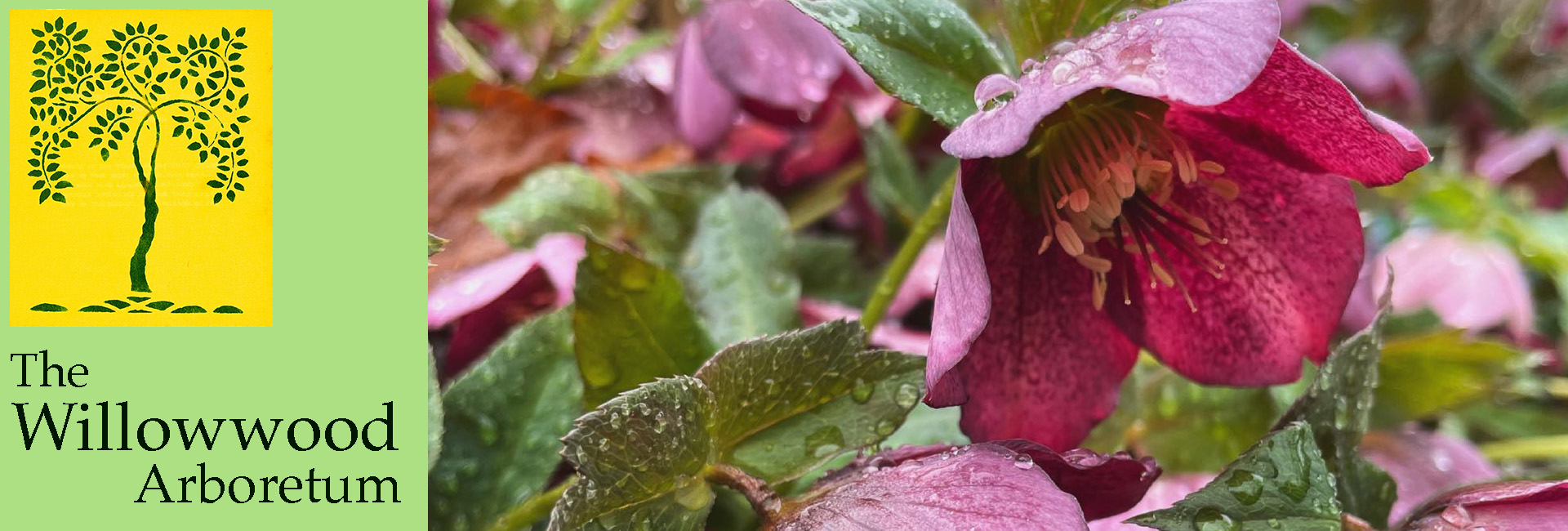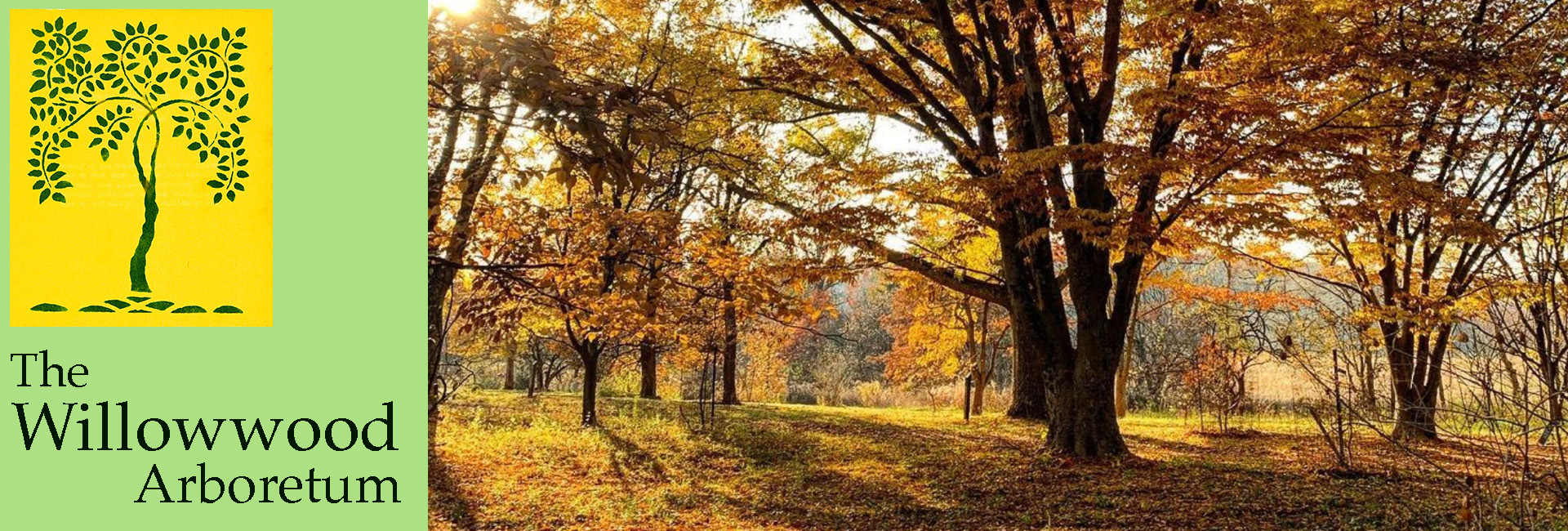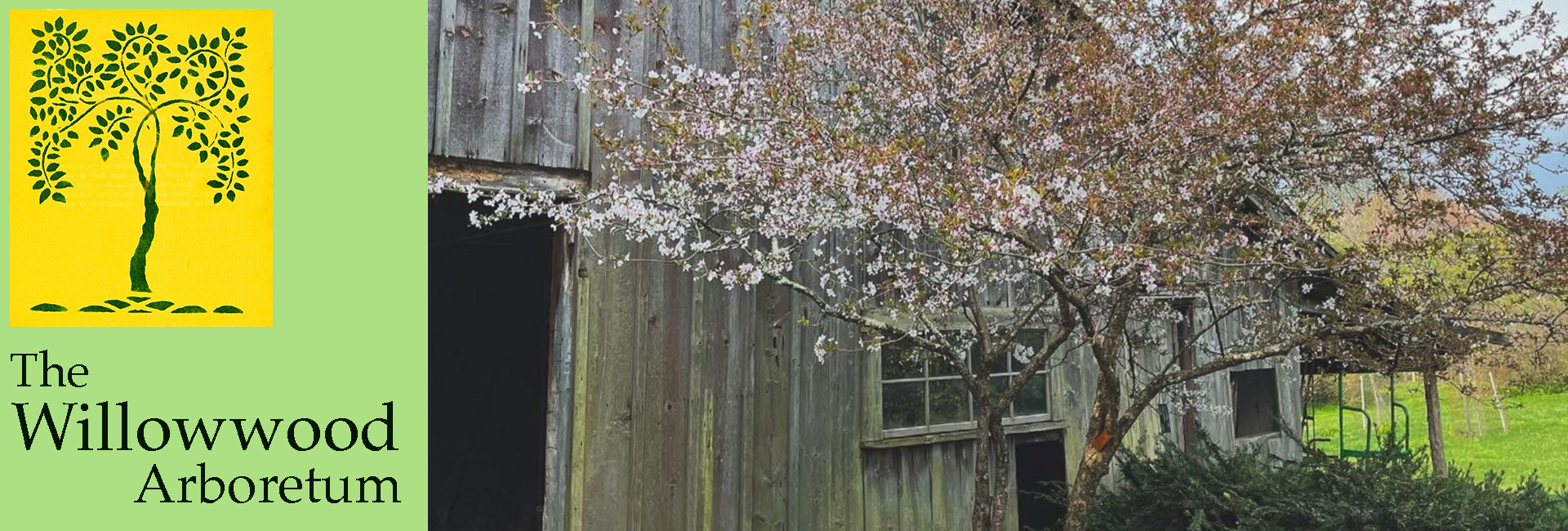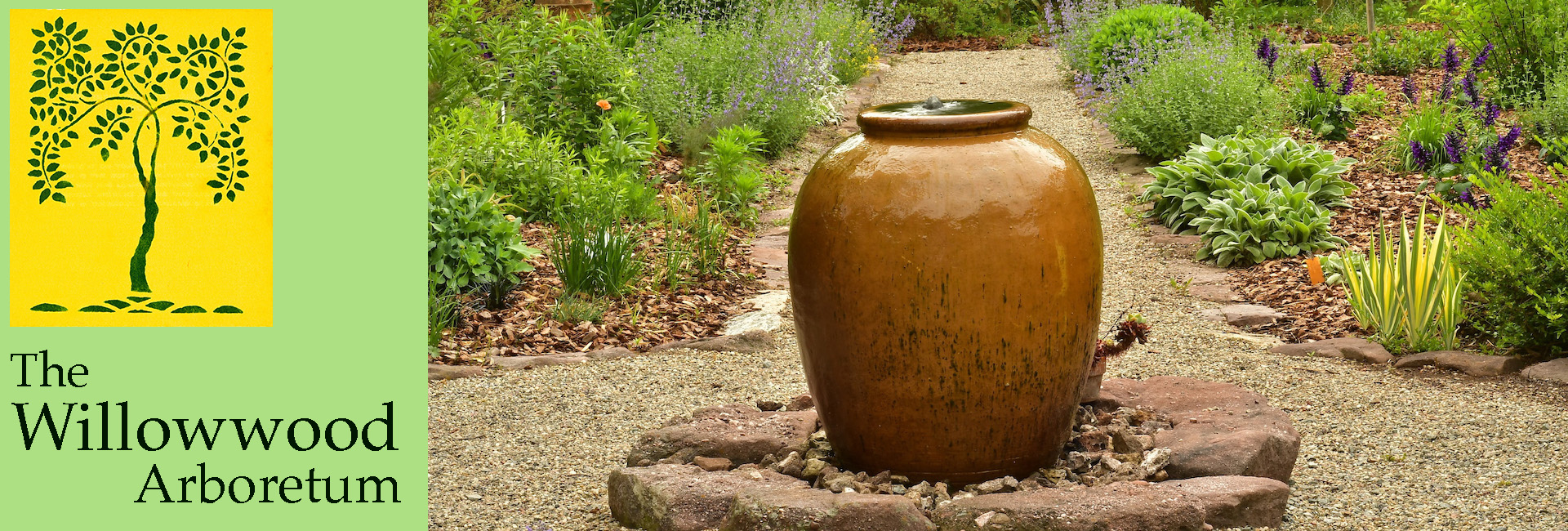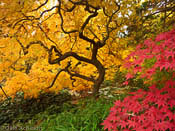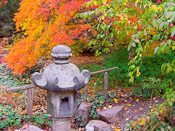Henry and Robert Tubbs enjoyed the beauty of the Willowwood Landscape year round and Winter was no exception. In fact, a number of plants in the collection are particularly ornamental during the late Autumn and Winter months. Some are evergreen, some deciduous but many have interesting fruit, bark or branching habit.
Start your tour opposite the entrance to the ‘Stone Barn’ and continue to the left.
The following is a list of our favorites.
- Betula pendula cv. Youngii – Weeping European White Birch: conspicuous white barkand dramatic pendulous branches are best appreciated in winter. Native to Europe, grows best in moist, well-drained soil and is hardy to zone 3 but languishes in warmer climates.
- Picea pungens cv. Montgomery – Dwarf Colorado Spruce: Conifers are the backbone of the winter landscape and this is one of the most popular with its distinctive blue green needle color. A Rocky Mountain native, it requires full sun but adapts to a variety of soils. The slow growing cultivar Montgomery was selected by Colonel Montgomery of Cos Cob, NY.
- Acer triflorum – Three-Flower Maple: Named for its flowers which are borne in clusters of 3, this slow growing round-headed tree grows to be 20-25′ tall with an equal spread. The pinkish-tan distinctive exfoliating bark is ornamental all year. In Fall, the medium green 3 parted leaves turn orange. It is a small specimen tree that prefers moist, acidic, well drained soil, is hardy to zone 5 and is native to Korea.
- Hamamelis mollis cv. Pallida – Chinese Witch-Hazel: This is one of our favorite shrubs and is among the first to bloom each Spring. The fragrant sulfur-yellow spidery blooms are produced at the first hint of warm weather. Native to central China, it features a smooth grey bark and distinctive vase shaped habit. Grows to 8-12′ tall, hardy to zone 5 and prefers moist, fertile, acidic, well drained soil in full sun or partial shade.
- Acer griseum – Paperbark Maple: Named for its cinnamon-red bark that exfoliates in papery sheets, it gorws slowly to 20-25′ tall with an upright oval outline. The three parted leaves are medium green, becoming dark orange-red in Autumn. Native to China, hardy to zone 5, it is especially beautiful when viewed against a snowy background. Prefers moist, fertile, well drained soil and full sun to partial shade.
- Fagus sylvatica cv. Fastigiata – Upright European Birch: Smooth grey bark, narrow upright habit and distinctive branch architecture is best appreciated in winter. One of the most popular European Beeches, it grows to 50-60′ high but only 12-15′ wide. Native to Europe, hardy to zone 5, it prefers moist, well drained soil.
- Abies pinsapo – Spanish Fir: Native to southern Spain, it features a conical, formal habit and fine texture, it is unique in that the rigid, glaucous-green needles are arranged radially around each shoot. This evergreen grows to 80′ and prefers moist, well drained soil, high humidity and cool temperatures.
- Viburnum dilatatum – Linden Viburnum: Native to eastern Asia, it has an upright, vase shaped habit, dark green leaves and grows to 8-10′ tall. The creamy white flowers appear in May and are followed by clusters of bright cherry-red berries in autumn with russet red leaves. Hardy to zone 5, this is an adaptable plant that grows best in moist, fertile, well drained soil in full sun to partial shade.
- Ilex verticillata – Winterberry Holly: This holly differs from others in that it is deciduous- making the bright red berries, borne on female plants only, all the more conspicuous well into winter. A North American native, it forms a rounded shrub 6-10′ tall, tolerates poorly drained soil but prefers moist, fertile, acidic soil in full sun to part shade.
- Viburnum trilobum – Cranberry Bush: This large (8-12′) rounded habit shrub produces showy white flowers in May and bright red berries in Fall. The lobed foliage resembles a duck’s foot and turns burgundy red in Autumn. In full sun or partial shade, it can be grown individually or as a hedge. Native to the northern US and Canda, it is hardy to zone 3.
- Amelanchier laevis – Allegheny Serviceberry: This informal, small tree is perfect for the home landscape. Its smooth grey bark, fine texture and distinctive upright habit shows best in Winter. But in early Spring, small white blossoms in clusters appear followed by berry like fruit that are enjoyed by wildlife. In Fall, the foliage turns reddish-orange. Native to the eastern US, hardy to zone 4, it performs best in moist, fertile, well drained soil in full sun or partial shade.
- Pinus koraiensis – Korean Pine: Native to Korea, this tree grows slowly to 30-40′ tall with bluish green needles arranged in bundles of 5. The grayish brown bark exfoliates in irregular flakes and has a more relaxed appearance than other conifers. Its growth habit is upright and narrow when young but becomes irregular with age. Hardy to zone 4 it grows best in full sun but adapts to a wide range of soil conditions.
- Malus sieboldii – Toringo Crabapple: The colorful yellowish-orange fruits are a wonderful addition to the winter landscape and are enjoyed by birds and other wildlife. It can grow to 15-25′ tall with a rounded habit and are often multi stemmed. In Spring, there are showy, fragrant pinkish-white blossoms. Native to Korea and Japan, it is hardy to zone 4 and will tolerate less than ideal soils.
- Fagus sylvatica cv. Pendula – Weeping European Birch: This beech displays distinctive pendulous branches and wonderful smooth grey bark and are very dramatic in Winter. It grows slowly in moist, well drained, acidic soil up to 40-50′ tall. Native to Europe, hardy to zone 5, it makes a fine specimen tree.
- Pincus bungeana – Lacebark Pine: Native to China, this is a conifer that is named for its bark that exfoliates to reveal patches of green, tan and white beneath. A multiple stemmed tree with a rounded, bushy havit, it grows to 30-40′ tall in well drained soil and full sun. Hardy to zone 5,
